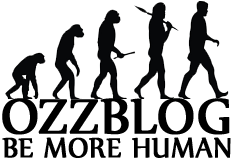
When Charles Darwin introduced the theory of evolution through natural selection 158 years ago, the scientists of the day argued over it fiercely, but the massing evidence from palaeontology, genetics, zoology, molecular biology and other fields gradually established evolution’s truth beyond reasonable doubt. Today that battle has been won everywhere—except in the public imagination. Embarrassingly, in the 21st century, creationists can still persuade politicians, judges and ordinary citizens that evolution is a flawed, poorly supported fantasy.

Creationists‘ arguments are typically specious and based on misunderstandings of (or outright lies about) evolution. Nevertheless, even if their objections are flimsy, the number and diversity of the objections can put even well-informed people at a disadvantage. The following list recaps and rebuts some of the most common “scientific” arguments raised against evolution. It also directs readers to further sources of information and explains why creation science has no place in the classroom. These answers by themselves probably will not change the minds of those set against evolution. But they may help inform those who are genuinely open to argument, and they can aid anyone who wants to engage constructively in this important struggle for the scientific integrity of our civilization
Evolution is only a theory, It is not a fact or a scientific law.
Many people learned in elementary school that a theory falls in the middle of a hierarchy of certainty—above a mere hypothesis but below a law. Scientists do not use the terms that way, however. According to the National Academy of Sciences (NAS), a scientific theory is “a well-substantiated explanation of some aspect of the natural world that can incorporate facts, laws, inferences, and tested hypotheses.” No amount of validation changes a theory into a law, which is a descriptive generalization about nature. So when scientists talk about the theory of evolution—or the atomic theory or the theory of relativity, for that matter—they are not expressing reservations about its truth.
In addition to the theory of evolution, meaning the idea of descent with modification, one may also speak of the fact of evolution. The NAS defines a fact as “an observation that has been repeatedly confirmed and for all practical purposes is accepted as ‘true.’” The fossil record and abundant other evidence testify that organisms have evolved through time. Although no one observed those transformations, the indirect evidence is clear, unambiguous and compelling.
All sciences frequently rely on indirect evidence. Physicists cannot see subatomic particles directly, for instance, so they verify their existence by watching for telltale tracks that the particles leave in cloud chambers. The absence of direct observation does not make physicists’ conclusions less certain.
Natural selection is based on circular reasoning: the fittest are those who survive, and those who survive are deemed fittest.
“Survival of the fittest” is a conversational way to describe natural selection, but a more technical description speaks of differential rates of survival and reproduction. That is, rather than labelling species as more or less fit, one can describe how many offspring they are likely to leave under given circumstances. Drop a fast-breeding pair of small-beaked finches and a slower-breeding pair of large-beaked finches onto an island full of food seeds. Within a few generations, the fast breeders may control more of the food resources. Yet if large beaks more easily crush seeds, the advantage may tip to the slow breeders. In pioneering studies of finches on the Galapagos Islands, Peter Grant and Rosemary Grant of Princeton University observed these kinds of population shifts in the wild.
The key is that adaptive fitness can be defined without reference to survival: large beaks are better adapted for crushing seeds, irrespective of whether that trait has survival value under the circumstances.
Read:
The next stage of human evolution: How will the Human Species Evolve?
The Timeline of Human Evolution
The Origin of Life on Earth
Evidence for evolution: anatomy, molecular biology, biogeography, fossils and direct observation.
If humans descended from monkeys, why are there still monkeys?
This surprisingly common argument reflects several levels of ignorance about evolution. The first mistake is that evolution does not teach that humans descended from monkeys; it states that both have a common ancestor.
The deeper error is that this objection is tantamount to asking, “If children descended from adults, why are there still adults?” New species evolve by splintering off from established ones when populations of organisms become isolated from the main branch of their family and acquire sufficient differences to remain forever distinct. The parent species may survive indefinitely thereafter, or it may become extinct.
Evolution cannot explain how life first appeared on Earth.
The origin of life remains very much a mystery, but biochemists have learned about how primitive nucleic acids, amino acids and other building blocks of life could have formed and organized themselves into self-replicating, self-sustaining units, laying the foundation for cellular biochemistry. Astrochemical analyses hint that quantities of these compounds might have originated in space and fallen to Earth in comets, a scenario that may solve the problem of how those constituents arose under the conditions that prevailed when our planet was young.
Creationists sometimes try to invalidate all of evolution by pointing to science’s current inability to explain the origin of life. But even if life on Earth turned out to have a nonevolutionary origin (for instance, if aliens introduced the first cells billions of years ago), evolution since then would be robustly confirmed by countless microevolutionary and macroevolutionary studies.
Natural selection might explain microevolution, but it cannot explain the origin of new species and higher orders of life.
Evolutionary biologists have written extensively about how natural selection could produce new species. For instance, in the model called allopatry, developed by Ernst Mayr of Harvard University, if a population of organisms were isolated from the rest of its species by geographical boundaries, it might be subjected to different selective pressures. Changes would accumulate in the isolated population. If those changes became so significant that the splinter group could not or routinely would not breed with the original stock, then the splinter group would be reproductively isolated and on its way toward becoming a new species.
Natural selection is the best studied of the evolutionary mechanisms, but biologists are open to other possibilities as well. Biologists are constantly assessing the potential of unusual genetic mechanisms for causing speciation or for producing complex features in organisms. Lynn Margulis of the University of Massachusetts Amherst and others have persuasively argued that some cellular organelles, such as the energy-generating mitochondria, evolved through the symbiotic merger of ancient organisms. Thus, science welcomes the possibility of evolution resulting from forces beyond natural selection. Yet those forces must be natural; they cannot be attributed to the actions of mysterious creative intelligence whose existence, in scientific terms, is unproven.
Nobody has ever seen a new species evolve.
Speciation is probably fairly rare and in many cases might take centuries. Furthermore, recognizing a new species during a formative stage can be difficult because biologists sometimes disagree about how best to define a species. The most widely used definition, Mayr’s Biological Species Concept, recognizes a species as a distinct community of reproductively isolated populations—sets of organisms that normally do not or cannot breed outside their community. In practice, this standard can be difficult to apply to organisms isolated by distance or terrain or to plants (and, of course, fossils do not breed). Biologists therefore usually use organisms’ physical and behavioural traits as clues to their species membership.
Nevertheless, the scientific literature does contain reports of apparent speciation events in plants, insects and worms. In most of these experiments, researchers subjected organisms to various types of selection—for anatomical differences, mating behaviours, habitat preferences and other traits—and found that they had created populations of organisms that did not breed with outsiders. For example, William R.Rice of the University of New Mexico and George W. Salt of the University of California, Davis, demonstrated that if they sorted a group of fruit flies by their preference for certain environments and bred those flies separately over 35 generations, the resulting flies would refuse to breed with those from a very different environment.
“Creation science” is a contradiction in terms. A central tenet of modern science is methodological naturalism—it seeks to explain the universe purely in terms of observed or testable natural mechanisms. Thus, physics describes the atomic nucleus with specific concepts governing matter and energy, and it tests those descriptions experimentally. Physicists introduce new particles, such as quarks, to flesh out their theories only when data show that the previous descriptions cannot adequately explain observed phenomena. The new particles do not have arbitrary properties, moreover—their definitions are tightly constrained because the new particles must fit within the existing framework of physics.
In contrast, intelligent-design theorists invoke shadowy entities that conveniently have whatever unconstrained abilities are needed to solve the mystery at hand. Rather than expanding scientific inquiry, such answers shut it down. (How does one disprove the existence of omnipotent intelligence?)
Intelligent design offers few answers. For instance, when and how did a designing intelligence intervene in life’s history? By creating the first DNA? The first cell? The first human? Was every species designed, or just a few early ones? Proponents of intelligent-design theory frequently decline to be pinned down on these points. They do not even make real attempts to reconcile their disparate ideas about intelligent design. Instead, they pursue argument by exclusion—that is, they belittle evolutionary explanations as far-fetched or incomplete and then imply that only design-based alternatives remain.
Logically, this is misleading: even if one naturalistic explanation is flawed, it does not mean that all are. Moreover, it does not make one intelligent-design theory more reasonable than another. Listeners are essentially left to fill in the blanks for themselves, and some will undoubtedly do so by substituting their religious beliefs for scientific ideas.
Time and again, science has shown that methodological naturalism can push back ignorance, finding increasingly detailed and informative answers to mysteries that once seemed impenetrable: the nature of light, the causes of disease, how the brain works. Evolution is doing the same with the riddle of how the living world took shape. Creationism, by any name, adds nothing of intellectual value to the effort.
Thank you for reading!

